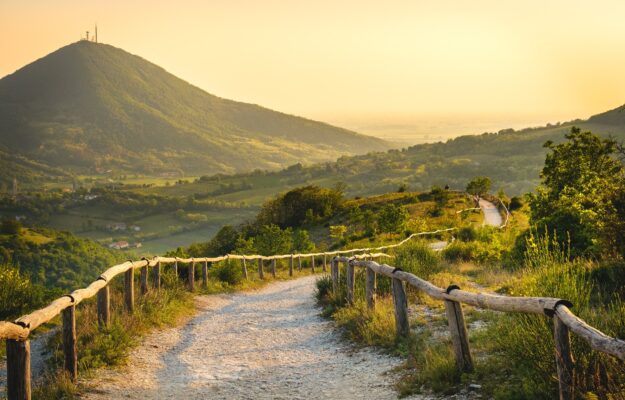Chestnut, locust and oak forests, vast meadows, areas of Mediterranean scrub, expanses of vineyards, rocky stretches with typical rocky vegetation: as of yesterday, the Euganean Hills are a UNESCO World Biodiversity Reserve. An important milestone for the Veneto and for Italy, to the achievement of which viticulture has also contributed significantly. But above all, it is an extraordinary opportunity for the area, where attention to biodiversity has always also passed, thanks to the vine growers, through the respect of landscape constraints and the use of low-impact cultivation techniques, which allow the preservation of hundreds of animal and plant life forms. The Euganean Hills thus join a worldwide network that to date has 759 Reserves, 21 of which are located in Italy.
“The inclusion of the Euganean Hills in the list of Unesco World Biodiversity Reserves is an extraordinary opportunity for our territory and our wine”, says the president of the Consorzio Tutela Colli Euganei, Gianluca Carraro, “we have supported the candidacy from the beginning, of which we feel we are an active part. Our viticulture is an expression of biodiversity, just think that more than 30 different grape varieties are grown here. Our vineyards cover a considerable area of the Park, more than 3,000 hectares, and contribute to the protection and conservation of the territory. Through their daily work, producers are engaged in water, forest and soil management, a fundamental role in light of the climate changes that are increasingly evident”, Carraro concludes. In addition to being a source of pride and further protection, the recognition will help make the territory and its wine known in the world.
The world network of Biosphere Reserves now includes 759 Reserves (including 25 transboundary) in 136 countries, including 21 in Italy: Collemeluccio-Montedimezzo (Molise, since 1977), Circeo (Lazio, since 1977), Miramare (Friuli Venezia Giulia, since 1979), Cilento and Vallo di Diano (Campania, since 1997), Somma-Vesuvio and Miglio d’Oro (Campania, since 1997), Ticino and Val Grande Verbano (Lombardy/Piedmont, since 2002), Islands of Tuscany (Tuscany, since 2003), Coastal Forests of Tuscany (Tuscany, since 2004), Monviso (Italy-France, since 2013), Sila (Calabria, since 2014), Tuscan-Emilian Apennines (Tuscany, Emilia, Liguria, since 2015), Ledrensi Alps and Judicaria (Trentino Alto Adige, since 2015), Po Delta (Emilia Romagna/Veneto, since 2015), Po Hill (Piedmont, since 2016), Tepilora, Rio Posada and Montalbo (Sardinia, since 2017), Comonica-Alto Sebino Valley (Lombardy, from 2018), Monte Peglia (Umbria, from 2018), Po Grande (Lombardy/Emilia Romagna/Veneto, from 2019), Monte Grappa (Veneto, from 2021), Euganean Hills (Veneto, from 2024), Julian Alps (Italy/Slovenia, from 2024).
Copyright © 2000/2025
Contatti: info@winenews.it
Seguici anche su Twitter: @WineNewsIt
Seguici anche su Facebook: @winenewsit
Questo articolo è tratto dall'archivio di WineNews - Tutti i diritti riservati - Copyright © 2000/2025









































































































































































































